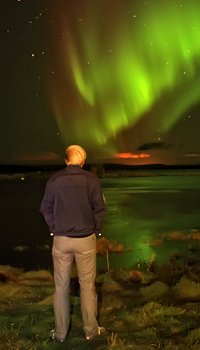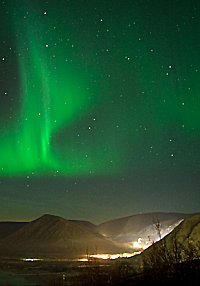
Planetary scientists won't get a re-do when NASA's LCROSS spacecraft and its Centaur carrier rocket slam into the Moon on October 9th. They've got one chance only to strike a permanently shadowed and presumably water-rich crater floor near the lunar south pole. So for weeks they've anguished over where ground zero will be. As noted by project scientist Anthony Colaprete notes, the selection process spawned a "vigorous debate" among researchers.
With just under a month to go, they've announced their choice: an unnamed 11-mile-wide (17-km) craterlet astride the rim of Cabeus A. It's got desirable target characteristics — a flat boulder-free floor, for instance, and a location favorable for telescopes back on Earth to watch the resulting plume of debris that should balloon above the crash site.
Mostly, they've picked what they've dubbed Cabeus A1 because it's what one official calls a "sweet spot," a spot where detectors aboard the Lunar Reconnaissance Orbiter (which accompanied LCROSS to the Moon) hint that the always-dark dust might contain roughly 1½% water ice.
Neither Cabeus A1 nor nearby Cabeus A were on the list of candidate target craters announced back in July, and frankly the project's pick is surprisingly far from the lunar south pole (latitude –81½°). This is good news for both professional and amateur astronomers hoping to catch a glimpse of the impacts.
Officials aren't saying how much they've determined about the crater, but LRO carries two instruments that potentially could have moved the bull's eye squarely onto Cabeus A1.
One is the Lyman-Alpha Mapping Project (LAMP)can literally see in the dark, using reflected ultraviolet radiation from starlight to image the permanently shadowed lunar terrain.
Meanwhile, the Lunar Exploration Neutron Detector (LEND) can detect the presence of hydrogen, which almost has to be in water ice, down to 100 parts per million. LEND was built by the Moscow's Space Research Institute, and as best I know this is the first and only time a Russian-built instrument has flown on one of NASA's spacecraft (not counting the International Space Station).
At today's press briefing, Daniel Andrews (LCROSS project manager at NASA-Ames Research Center) assured everyone that the spacecraft was ready for its big finale. The team had a scare last month when an errant sensor caused wild thruster firings that squandered about half of the spacecraft's maneuvering fuel. Andrews also announced that the LCROSS mission has been dedicated to the memory of the late Walter Cronkite, the longtime television news reporter and anchor who followed NASA's missions from the Mercury program in the early 1960s to Space Shuttle.
So now it's time to start getting ready to observe lunar fireworks on October 9th. The timing, 4:30 a.m. Pacific Daylight Time, favors the big guns atop Mauna Kea in Hawaii in throughout western North America.
Sadly, I'll be in Puerto Rico that week — attending, ironically, a meeting of planetary scientists. Will someone please let us all know how things turn out?
 Lake Myvatn, Iceland Sept. 17, 2009
Lake Myvatn, Iceland Sept. 17, 2009 North Pole, Alaska Sept. 15, 2009
North Pole, Alaska Sept. 15, 2009 Yellowknife, Northwest Territories, Sept. 11, 2009
Yellowknife, Northwest Territories, Sept. 11, 2009 Kola peninsula, Russia, Mt. Khibiny Sept. 14, 2009
Kola peninsula, Russia, Mt. Khibiny Sept. 14, 2009
 Lake Myvatn, Iceland Sept. 17, 2009
Lake Myvatn, Iceland Sept. 17, 2009 North Pole, Alaska Sept. 15, 2009
North Pole, Alaska Sept. 15, 2009 Yellowknife, Northwest Territories, Sept. 11, 2009
Yellowknife, Northwest Territories, Sept. 11, 2009 Kola peninsula, Russia, Mt. Khibiny Sept. 14, 2009
Kola peninsula, Russia, Mt. Khibiny Sept. 14, 2009



